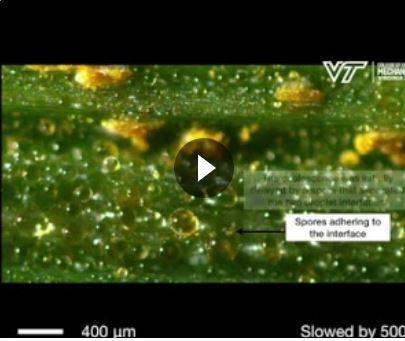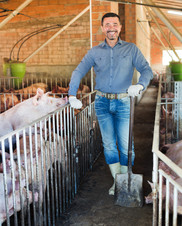|
Having trouble viewing this email? View it as a Web page.

|
|
|
Fresh From the Field is a weekly album showcasing transformative impacts made by partners supported by the National Institute of Food and Agriculture.
Editor: Falita Liles June 27, 2019
|
|
Success Stories

Restoring Access to Native Foods May Reduce Tribal Food Insecurity
Native Americans suffer from the highest rates of food insecurity, poverty, and diet-related disease in the United States. A new study finds that Native American communities could improve their food security with a greater ability to hunt, fish, gather, and preserve their own food.
The study conducted by researchers at University of California Berkeley (UC Berkeley) and four Native American tribes shows that 92 percent of Native American households in the Klamath Basin suffer from food insecurity.
“How food security is framed, and by whom, shapes the interventions or solutions that are proposed,” said Jennifer Sowerwine, Cooperative Extension specialist at UC Berkeley, who led the study in partnership with the Karuk, Yurok, Hoopa, and Klamath tribes. “Our research suggests that current measures of and solutions to food insecurity in the United States need to be more culturally relevant to effectively assess and address chronic food insecurity in Native American communities.”
"Reframing food security by and for Native American communities: a case study among tribes in the Klamath River basin of Oregon and California” is published in the journal Food Security.
This research was part of a $4 million, five-year Tribal Food Security Project funded by USDA’s National Institute of Food and Agriculture, Agriculture and Food Research Initiative Food Security Grant #2012-68004-20018. For full results and recommendations from the project team, visit https://nature.berkeley.edu/karuk-collaborative/?page_id=1088
Media contacts: Jennifer Sowerwine, Cooperative Extension specialist at UC Berkeley, jsowerwi@berkeley.edu, (510) 207-2692
Lisa Hillman, program manager for the Karuk Tribe’s Píkyav Field Institute, lisahillman@karuk.us, (530) 598-4080
|
News Coverage
'Sneezing' Plants Contribute to Disease Proliferation
Virginia Tech researchers discovered that wheat plants "sneezing" off condensation could vastly affect the spread of spore-borne diseases, such as wheat leaf rust, which can cause crop yield losses of up to 20 percent or more in the United States and even higher losses in less developed agricultural nations.
NIFA supports this research through the Agriculture and Food Research Initiative.
Read the article at VT News.
|
|
 |

Video Games Offer Clues to Help Curb Animal Disease Outbreaks
As Asia and Europe battle African swine fever outbreaks, University of Vermont (UVM) research shows how farmers’ risk attitudes affect the spread of infectious animal diseases and offers a first-of-its kind model for testing disease control and prevention strategies.
Strengthening biosecurity is widely considered the best strategy to reduce the devastating impact of disease outbreaks in the multi-billion-dollar global swine industry, but successfully doing so comes down to human decision-making, a UVM study shows. The study, published June 25 in Frontiers in Veterinary Science, is the first of its kind to include human behavior in infectious disease outbreak projections — a critical element that has largely been ignored in previous epidemiological models, the university said. Incorporating theories of behavior change, communications, and economic decision-making into disease models gives a more accurate depiction of how outbreak scenarios play out in the real-world to better inform prevention and control strategies, the announcement said.
“We’ve come to realize that human decisions are critical to this picture,” said Gabriela Bucini, a postdoctoral researcher in UVM’s Department of Plant and Soil Science and lead author of the study. “We are talking about incredibly virulent diseases that can be transmitted in tiny amounts of feed and manure. Ultimately, controlling these diseases is up to the people in the production system who decide whether or not to invest and comply with biosecurity practices.”
Seeking to understand the role of human behavior in animal disease outbreaks, the researchers designed a series of video games in which players assumed the roles of hog farmers and were required to make risk management decisions in different situations. Observing how players responded to various biosecurity threats provided data used to simulate the spread of porcine epidemic diarrhea virus — one of the most severe infectious diseases in the U.S. swine industry — in a regional, real-world hog production system.
NIFA supports this research project with the Agriculture and Food Research Initiative.
Read the article at UVM.
|
Tweet of the Week
#NIFAIMPACTS

|
|

NIFA’s mission is to invest in and advance agricultural research, education, and extension that solve societal challenges. NIFA’s investments in transformative science directly support the long-term prosperity and global preeminence of U.S. agriculture. To learn more about NIFA’s impact on agricultural sciences, visit www.nifa.usda.gov/Impacts, sign up for email updates or follow us on Twitter @USDA_NIFA, #NIFAImpacts.
USDA is an equal opportunity lender, provider, and employer.
|
|